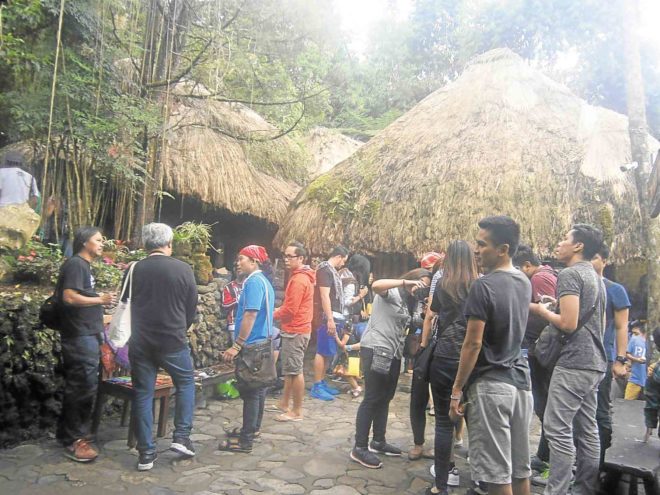
Come late May, with the approach of the rainy season, rainshowers fall on Baguio and the mists descend, nestling upon the pine trees and blanketing the congested, less attractive areas of the city.
It is the time for the International Tam-awan Arts Festival, recently held at the indigenous Tam-awan Village in the summer capital.
The event was sponsored by the National Commission for Culture and the Arts (NCCA), Chanum Foundation, Proudly Asean, the City of Baguio and partner agencies. It was meant to showcase the culture, arts and crafts of the indigenous peoples (IPs) of the Cordillera region, but with the participation of artist groups, tribal as well as mainstream, from Bolinao, Pangasinan, in the North, to Zamboanga in the South.
This year, Tam-awan attracted a lot of visitors from Manila, many bringing their children along to gape at the features of the Village and avail of the de rigueur photo op.
The theme for 2017 was “Keeping the Stones Rolling: Cordilleran Architecture, Landscape, Construction Techniques and Materials.”
The International Labor Organization has defined the indigenous as those people “descended from the populations which inhabited the place at the time of conquest/colonialization who retain some or all of their own social, economic, cultural… institutions.”
On the other hand, my oldfashioned, pre-Internet Pocket English Dictionary defines an indigenous person as “one originating in or being native to a particular place.”
Cordillera homes
At Tam-awan, there were lectures on Cordillera homes (the rich have a granary near their homes, the poor none and the earth is their floor), slide presentations, the Ivatan house, what is indigenous in Vigan architecture, workshops for students as well as professional artists, discussions on Unesco World Heritage sites in the Cordilleras, and art exhibits.
The ambience at Tam-awan Village itself is invigorating, with its stairway of stone leading to a gallery, café, Dream Catcher Bridge Wishing Pond and Spirit House, among other features. There are authentic tribal huts, including an Ifugao Fertility Hut (where a couple wishing to bear children stay) and a hut that is colorfully decorated.
Mirrors placed on trees represent the life cycle of the Cordillera people, and stress the connection between man and the environment.
On sale were musical instruments, blow darts and fashion accessories (brought there by members of the Talaandy tribe in Bukidnon) like bamboo flutes, a leather cell phone case (expensive at P500), percussion instruments, castanets like kukak, rings and ethnic tote bags. Prices ranged from P50 (key holder) to P3,000 for a finely crafted bamboo flute.
One of the lecturers was prominent social realist painter Edgar T. Fernandez, head of the NCCA’s Visual Art Committee, who spoke on “Art into the Mainstream.” He noted that mainstream or international art evolved from